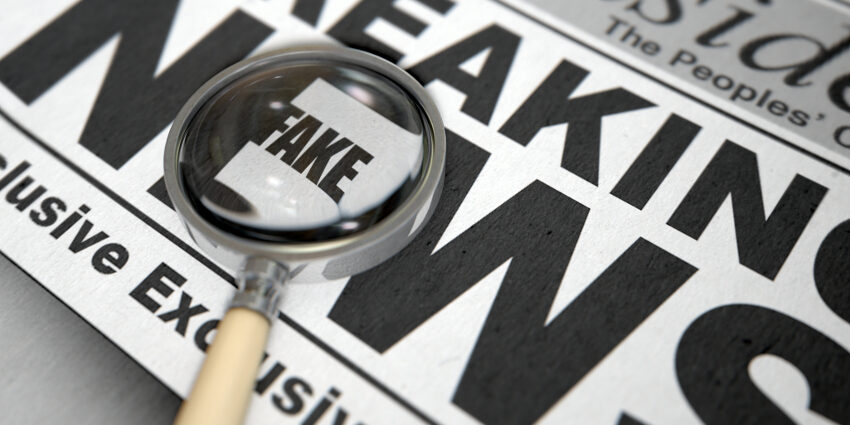The battle royal of the 2016 election brought forth many new campaign paradigms, but one that has continued to rumble along in daily media is the newest buzzword we all know as “fake news.” Fake news is defined as a hoax or deliberate spread of false information for financial or political gain. This type of false information can be spread through traditional print or broadcast media as well as through Internet-based social media sites. Although the term itself is considered new, the concept has been around since the 19th century.
There are many ways that fake news can affect your business and so should be actively avoided. One very damaging scenario would be if a disgruntled customer creates a false story about your business and turns that falsehood into a viral, fake news “fact” in your community. Another slip up would be if you don’t do your research and end up sharing a fake news story from your own business site. Doing this would create an atmosphere of distrust from customers and make them question whether you know your business well at all.
Here are five tips our Social Media Troupe and Digital Warrens Specialist go by to avoid the spread of fake news:
1) Double check that you are sharing a story from a credible source.
Only share stories from reputable sources and be sure to research unfamiliar sources. This Infographic is a decent visual resource for checking your sources.
2) Watch out for clickbait or sponsored posts.
Clickbait is defined as “something (such as a headline) designed to make readers want to click on a hyperlink especially when the link leads to content of dubious value or interest.” You’ve likely noticed posts such as “25 photos that show famous people doing something crazy”—classic clickbait.
Sponsored posts are posts on social media sites that are bought by companies and promoted to show in your newsfeed. Since these posts are more than likely written by whoever chooses to promote them, you cannot assume that what is written is fact checked or without an ulterior motive.
3) Make use of news checking sites such as snopes.com or factcheck.org.
These sites are nonpartisan and nonprofit; their only motivation is to stop the spread of “fake news.”
4) Be wary of photos or memes.
Photos can be stolen from anywhere and can be photoshopped or altered into misinformation.
5) Do the research.
Five minutes is all it takes to google an article in question and see if it is fact or fiction. Googling the headline or a few keywords from the article and seeing it cited on other reputable websites will assure you that it is safe to post and share.
By following our tips, you can keep yourself and your business safe from the pitfalls that come from sharing fake news. One ultimate way of avoiding trouble is to hire a social media specialist and create a social media plan. Our Social Media Troupe uses a Digital Warrens Specialist who triple checks every planned article shared on your social media page before it posts. If you have any questions, our Social Media Troupe and Digital Warrens Specialist are always available to double check the article or photo in question and help you set up a plan to ensure that your business stays fake news free!
Written by Carrie Hellbusch || Digital Warrens Specialist

